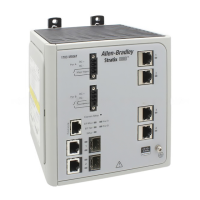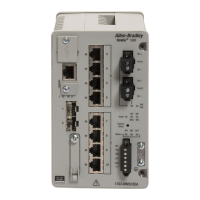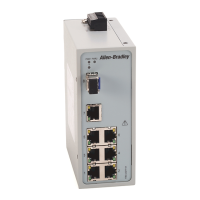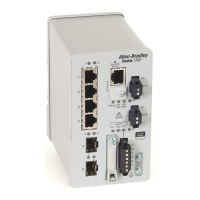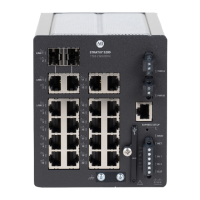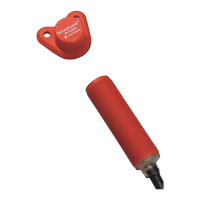42 Rockwell Automation Publication 1783-UM003G-EN-P - December 2012
Chapter 2 Switch Software Features
REP segments have these characteristics:
• If all ports in the segment are operational, one port (referred to as the
alternate port) is in the blocked state for each VLAN.
• If VLAN load balancing is configured, two ports in the segment control
the blocked state of VLANs.
• If one or more ports in a segment is not operational, causing a link failure,
all ports forward traffic on all VLANs to ensure connectivity.
• In case of a link failure, the alternate ports are unblocked as quickly as
possible. When the failed link comes back up, a logically blocked port per
VLAN is selected with minimal disruption to the network.
Access Ring Topologies
In access ring topologies, the neighboring switch might not support REP, as
shown in the following figure. In this case, you can configure the non-REP facing
ports (E1 and E2) as edge no-neighbor ports. These ports inherit all properties of
edge ports, and you can configure them the same as any edge port, including
configuring them to send STP or REP topology change notices to the
aggregation switch. In this case the STP topology change notice (TCN) that is
sent is a multiple spanning-tree (MST) STP message.
In the following figure, E1 or E2 should be configured as the primary no-
neighbor port.
REP has these limitations:
• You must configure each segment port; an incorrect configuration can
cause forwarding loops in the networks.
• REP can manage only a single failed port within the segment; multiple
port failures within the REP segment cause loss of network connectivity.
E1 and E2 are configured
as edge no-neighbor ports
273792
REP ports
REP not
supported
E2
E1
REP Not Supported
REP Ports - Configured
at Transit Ports
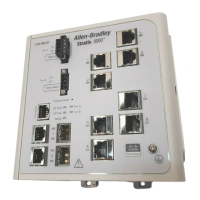
